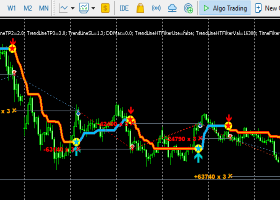Forex Weekly Outlook May 16-20
The US dollar had another positive week, enjoying some good data. UK and US inflation data, housing figures and most importantly the FOMC Meeting Minutes stand out. These are the highlights of this week. Join us as we explore the market movers on Forex calendar.
US jobless claims posted a higher than expected reading of 294,000. The 20,000 addition reached the highest level since February 2015. However, the positive trend that began early in May continued for the dollar, especially as retail sales beat expectations, something that doesn’t usually happen. Does this imply a Fed hike? Not so fast, as Yellen and co. don’t seem to be in a hurry. The fear of a Brexit, highlighted by the BOE, is one possible reason to wait. Will the dollar continue higher? Let’s start?
Updates:
- UK inflation data: Tuesday, 8:30. UK inflation edged up to 0.5% in March following a 0.3% gain in the previous month. A jump in air fares was the main cause for this rise. consumer price inflation reached its highest level since December 2014, but still below the Bank of England’s 2% target. Despite this rise, the majority of economists do not expect a rate hike before early next year. CPI in the UK is expected to rise by 0.5% in April.
- US Building Permits: Tuesday, 12:30. U.S. housing starts declined more than expected in March and permits registered a one-year low of 1.09 million-unit rate, suggesting the market has lost momentum in economic growth in the first quarter. The weak figures go hand in hand with the slowdown in business spending, industrial production, trade, inventory investment and retail sales. Permits for the construction of single-family homes decreased 1.2% in March after a strong gain in February. The number of building permits is expected to rise to 1.13 million-unit pace.
- US inflation data: Tuesday, 12:30. U.S. consumer prices barely moved in March rising 0.1% showing little reason for interest rate hikes in the near future. The lukewarm inflation figures do not reflect the ongoing improvement in the job market. The CPI declined 0.2% in February. On a yearly base, CPI increased 0.9% after advancing 1.0% in February. Economists expected a 0.2% rise in both CPI and Core CPI. The core CPI held back by housing and medical costs and apparel. Despite the slowdown in Core prices, analysts believe that a fading dollar rally, stabilizing oil prices and tightening labor market will ignite inflation this year. CPI is forecasted to rise 0.4% while core prices are estimated to climb 0.2% this time.
- UK employment data: Wednesday, 8:30. The number of people receiving jobless benefits increased by 6,700 in March, missing predictions for an 11,900 cut. The jobless-claims rate remained at 2.1%. BOE said recruitment in April was nearly unchanged showing muted employment growth. Meanwhile, U.K. unemployment edged up for the first time in seven months and employers added fewer jobs than forecast, suggesting the labor market is losing momentum. The number of people looking for work climbed by 21,000 to 1.7 million in the three months through February. In light of these figures, the Bank of England is in no hurry to raise interest rates anytime soon and the June 23 EU vote is starting to weigh on UK economic growth. The amount of people receiving jobless benefits is expected to rise by 4,100 in April.
- US Crude Oil Inventories: Wednesday, 14:30. Crude inventories plunged 3.4 million barrels last week, missing forecasts for a 714,000 barrels rise. This was the first decline since March. Prices of crude oil jumped 4.6% to $47.6. The EIA expects Brent to trade at $76 a barrel in the next year on continued increase in demand.
- US FOMC Meeting Minutes: Wednesday, 18:00. These are the meeting minutes from the April decision, in which the Fed left policy unchanged, acknowledged some improvement but did provide any hike hints. The chances for a rate hike in June dropped after that meeting but since then, data has improved. So, this is an opportunity for the Fed to hint about raising rates in June, if this is indeed the case, and it’s quite unclear that this a real option for the doves that control the Fed. It is important to remember that the minutes are edited until the last moment, allowing the Fed to sharpen any message.
- Australian employment data: Thursday, 1:30. Australia’s unemployment fell to its lowest rate since 2013, reaching 5.7% from 5.9% in March. The reading was better than the 5.9% forecast. The employment market expanded by 26,100 jobs in March, far better than the 18,600 addition anticipated. Full-time employment declined 8,800, while the number of part-time jobs was up by 34,900. On a yearly base, the number of employed people had increased by 2.2%, while the number of unemployed people had declined 4.6%. The participation rate remained unchanged at 64.9%. Australia’s job market is expected to register 12,300 jobs addition, while the unemployment rate is expected to rise to 5.8% this time.
- US Philly Fed Manufacturing Index: Friday, 12:30. Philadelphia Fed Manufacturing Index fell to minus 1.6 in April, following a nice gain of 12.4 in March. The index turned positive in March after being in negative territory for six straight months. New orders index declined from 15.7 to zero, while the current shipments index fell sharply from 22.1 to minus 10.8. The employment data deteriorated sharply. However, despite the decline in the headline index for current conditions, survey respondents were more positive on future activity. The ndex is expected to improve to 3.2 in May.
- US Unemployment Claims: Thursday, 12:30. The number of Americans filing initial claims for unemployment benefits edged up last week to the highest level in more than a year. The number of claims climbed 20,000 to 294,000. The unexpected increase fueled concerns that some employers are cutting back due to economic uncertainty. The number of claims has increased for three consecutive weeks. However, economists said it is too early to declare an economic slowdown. Despite the rise, jobless claims are near exceptionally low levels, indicating the economy is still steadily on solid growth. Jobless claims are estimated to reach 276,000 this week.
- US Existing Home Sales: Friday, 14:00. The vast majority of home sales in the US are of second hand, existing homes. The number of sales in March stood on 5.33 (annualized), more or less as expected. A similar figure of 5.39 million is on the cards now. This is the last significant publication of the week, giving it more weight than it usually has.
That’s it for the major events this week. Stay tuned for coverage on specific currencies
*All times are GMT.



